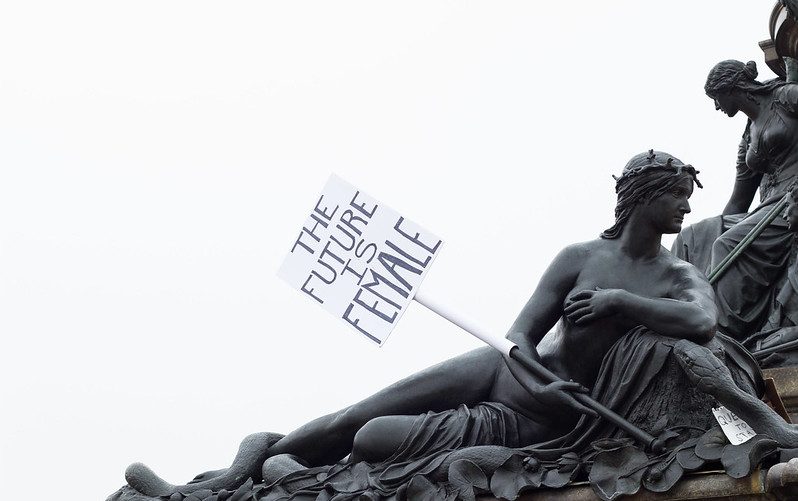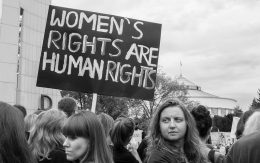This essay was first written and submitted for an Anthropology of Development course at SOAS University of London.
Introduction
Growing concern about the correlation between women and poverty in developing countries has expanded in the last few decades within the field of international development. From the 1980s onwards, the Gender and Development (GAD) approach emerged to address the gendered nature of poverty and the challenges to progress towards an ideal of women empowerment and liberation from structural inequalities (Chopra and Müller, pp. 2-3). Different feminist perspectives used to constitute the GAD approach suggested that lifting women out of poverty needed to encourage a collective effort to fight the deep-rooted structures of power and structural inequalities responsible for oppressing women (Chopra and Müller, p. 4).
Yet, these different feminist perspectives did not suggest directly that improving women’s economic production through loans and other tools would automatically empower them. Something got lost in translation: large credit agencies and NGOs predominantly tended towards considering economic empowerment as the core strategy to address gender inequality and poverty (Chopra and Müller, 5). The idea of ‘investing’ in women and girls became central to GAD projects and the philosophy behind large credit programs (Chopra and Müller, 6). As a result of studies conducted to investigate the effectiveness of the ‘investing in girls and women’ narrative have shown, however, economic empowerment is not enough to confer women and girls a just and equitable position in society – on the contrary, it strengthens oppressive power dynamics already at place, without challenging the structure that upholds the subordination of women on the one hand, and the social construction of rigid male stereotypes on the other (Goetz, p. 25, Cornwall, p. 16).
Incorporating some of the studies and critiques that explain the theoretical and practical reasons behind this failure, this analysis explores the reasons why economically investing in women and girls in developing countries is not an effective strategy to eradicate gender inequalities. Emphasizing the indirect western capitalist agenda central to credit programs and to the logic of loan disbursement, some of the most problematic aspects of empowering women through economic means are discussed in the forthcoming essay.
Women’s Empowerment and the Complicit Politics of Capitalist Interests
The idea of economic autonomy, a key ingredient to women’s emancipation, was inherited by western feminist preoccupations of the 1970s and 1980s. The household was seen as the main site for conflict, where women’s rights, freedom, body ownership were jeopardized (Cornwall, p. 4). The concern with liberating women from domestic oppression became central to the articulation of GAD (Cornwall, p. 3). Feminists involved in the process were determined to prevent large development projects from considering the male head of the household as benevolent and ensuring the welfare of the family (Cornwall, p. 4). Their critique was based on two tenets that mirror the feminist movement’s demands of the time: the need for women to become self-sufficient in order to be able to escape domestic tyranny, and the binary opposition between men and women “in which women-in-general were subordinate to men-in-general” and therefore men and women necessarily have conflicting interests (Cornwall, pp. 2-3).
This 1970s classic feminist analysis was relevant in the struggle against gender inequality and female oppression women (and mostly white, educated women) were enduring in Europe and North America. However, this analysis fell short to recognize the diversity of women’s needs and identities across cultures and social structures, causing the mistaken assumption that women’s main source of discrimination is conjugal heterosexual relationships, therefore obscuring the impact of other forms of discrimination (race, class, sexual orientation, etc.) and clumsily universalizing western socio-cultural narratives (Cornwall, p. 4). As NGOs and large development agencies undertook more GAD programs and projects, they did not equally absorb the variety of feminist perspectives available – rather, they stuck to classic feminist theory with its emphasis on women’s economic autonomy (Jackson, p. 489).
This tendency was challenged, in the 1990s, by feminist activists in the global south who started the discourse of women’s empowerment for the first time – “a term mobilized to speak about women’s exclusion from economic, social and political life, that became a clarion call for an approach focused on building women’s capacity to mobilize collectively and act to demand rights and recognition” (Cornawall, p. 6). Paradoxically, the term was swallowed by the GAD discourse and came to displace the concept of gender equality that had already been endorsed in international development. Arguably, this is a significant phenomenon, for it discloses the authority that mainstream western cultural narratives continue retaining in the international development arena and their power in obscuring less dominant narratives.
Acknowledging this trend in the evolution of GAD, Cornwall (2014) argues that the whole empowering women concept was presented by policymakers to international development banks and corporate donors as “a way to spur economic growth and meet other developmental ends,” such as improving child nutrition and alleviating global poverty (pp. 6-7). These actors, therefore, identified women living in poverty as profitable investments, potential consumers, and producers – in short, women’s economic potential came to be valued and even considered “a safer bet” than men in terms of loan returns, responsibility, and reliability – an assumption quite corrosive in itself, largely based on gender stereotypes, which is discussed in more detail below (Cornwall, p. 6). Using small-scale microenterprises and encouraging self-employment to empower women, emerging corporations have seen a consistent rise in profits (Cornwall, p. 7).
Project Shakti in India, for example, trains women on basic tenets of distribution management to distribute Unilever’s products into distant rural areas in eighteen different Indian states (Cornwall, p. 7, Hindustan Unilever Limited). Project Shakti accounts for 20% of Unilever’s profits (Cornwall, p. 7). The project description first line reads: “HUL has trained thousands of women in villages across India to develop an entrepreneurial mindset and make them financially independent” (Hindustan Unilever Limited). The message is straightforward in explaining the project’s mission: making women into entrepreneurs and potential buyers. It also uncovers a conceptualization of poverty as an individual issue: if poor women enter the labor market through a corporate agency that works to ‘promote gender equality’ they will be lifted out of poverty and eventually also overcome gender discrimination. As Cornwall points out, “Poverty becomes a matter for the individual to lift themselves up and out of by their own bootstraps, rather than a result of social inequalities that might bring with it some responsibility from the state. The relational dimensions of gender are of less interest to corporations and philanthrocapitalists than the economic potential of girls and their capacity to consume, as well as produce, and to act as a vast untapped motor of economic growth” (Cornwall, p. 8).
Undoubtedly, there are positive aspects to women who successfully acquire financial independence as become able to escape domestic violence, assure better opportunities for themselves and their children, etc. However, being financially independent is not the same as becoming immune to structural violence and inequality. Evidence from research conducted amongst generations of families in Salvador for twenty years has shown that working-class women who are economically independent have continued being pressured by traditional family ideals and oppressive gender stereotyping over time (Chopra and Müller, pp. 5-6). Women’s empowerment cannot be realized, unless it is seen as a political process through which power relations at place are questioned.
In her notorious Who Takes the Credit? Gender, Power, and Control Over Loan Use in Rural Credit Programmes in Bangladesh (1994), Goetz presents the findings of her research conducted across several villages in rural Bangladesh about whether women who receive loans from credit programs actually retain full control and agency over them, or whether the loans are used by their husbands or other male members of their household. Her evidence shows that 37% of the women she interviewed said that they had significant control over their loans (Goetz, p. 9). These women tended to be first wives in polygamous households or older married women, whereas the 22% of women who said they had no control, were new brides or unmarried women, more likely to be pressured by family members to access credit programs, and therefore to lose control of their loans (Goetz, p. 10). For this category of women, loans may actually cause them to be in a more vulnerable situation than before since they come to be seen as a new source of revenue for the household (Goetz, p. 15).
Goetz observes that women’s control over loans was hard to determine and that the extent of declared control did not represent real empowerment for women. Many women who considered their control over loan use significant actually invested it in family-related matters such as payment of dowry or medicine – matters women are responsible for according to Bangladeshi gender roles (Goetz, pp. 9-10). When women, instead, invested their loans in conventional women’s activities, “gender role ascriptions were not challenged,” the result being that women’s labor burden increased “without any significant increase in control over the productive process” (Goetz, p. 15). Overall, her evidence suggests that not only women have low control rate over loans – even when they do have control over them, their situation in terms of oppression from patriarchal culture remains unchanged if not even worsened.
Speaking about the capital-driven interest in increasing the productivity of women through small enterprises which do not relieve them of any of their domestic responsibilities, she cleverly notes that: “This postpones any feminist concerns with redistributing gendered domestic responsibilities – which are, after all, a structural feature of unequal gender relations – and limits the potential for skills acquisition, exposure to the ‘public’ world, and job-based organisation associated with gaining formal sector employment. The input-delivery focus of credit and income-generating programmes involves an implicit assumption that easing women’s access to credit translates unproblematically into their control over its use” (Goetz, p. 31).
This, arguably, is the result of instrumentalizing gender concerns as means for large international development corporations to address economic growth and poverty reduction, without addressing the structural nature of gender-based violence and oppression (Jackson, p. 491). Goetz argues that, because credit programs field-workers are usually pressured to disburse large loans in a limited amount of time, they have loose criteria in disbursing loans, which negatively affects unmarried and poor women who are more likely to be denied access to loans (Goetz, p. 21). The economic interests of credit agencies seem to accentuate the poor effectiveness of empowerment programs for women.
The focus in GAD on investing in individual women is thus supported by a capitalist logic that is not preoccupied with delivering real empowerment to women and obscures the structural nature of poverty and inequality. The exclusion of men and boys from the economic women’s empowerment narrative serves this strategy. As Goetz and others suggest, credit programs and other GAD projects tend to reinforce certain gender stereotypes about men and women. The focus on women and girls as fertile territory for investment, paired with men and boys being portrayed as obstacles to this goal is dangerous for a number of reasons (Chopra and Müller, p. 7, Cornwall, p. 9).
The individualized nature of the women’s empowerment narrative fails to identify the patriarchal power structure as the enemy of gender inequality rather than individual men (Cornwall, p. 12). Excluding men from credit opportunities most likely results in exacerbated male-dominant behaviors and an intensified exploitation of women’s labor within the household (Goetz, p. 20). The lack of effort in changing men’s perception of women’s worth sustains rigid gender roles and favors, simultaneously to the improvement of women’s economic productivity and the perpetuation of corrosive gender power dynamics (Goetz, p. 18). The fact that women are considered ‘moral guardians’ of the household and therefore more suitable for accessing loans than men who are considered irresponsible and unreliable exemplifies how credit programs leave the status quo unchallenged and even profit from it.
Conclusion
The focus on women’s economic empowerment in GAD is the product of some prevailing economic and implicit biased interests in the international development industry. Money, especially when distributed individually to women who live in poverty, proves inadequate to bring about social change and gender justice. Goetz’s research points that the condition of Bangladeshi rural women, dictated by ingrained patriarchal practices and social roles, is instrumentalized by credit agencies to turn them into perfect “loan repayment officers” (Jackson, p. 491, Goetz, p. 22,). The idea of women’s economic empowerment proves to be instrumentalized in order to increase poor women’s labor production, whilst empowerment is not delivered and gender-based discrimination and oppression often remain the same. GAD programs’ fixation with empowering women individually contributes to constructing poverty as an individual problem, which the individual poor is responsible for solving, rather than the result of global structural inequalities that need collective struggle and state legislative action to be tackled. As the evidence discussed in this essay suggests, the empowerment of women and the work to end gender-based violence must be done through a collective struggle that includes men and boys in the fight against structural violence and inequitable power relations, rather than individualized programs that target women’s ability to produce and consume.
Sources Cornwall, A. 2014. “Taking Off International Development’s ‘Straight-Jacket of Gender,” Brown Journal of World Affairs, Draft for publication. Chopra, D., Müller, C. 2016. “Connecting Perspectives on Women’s Empowerment,” IDS Bulletin Transforming Development Knowledge, 47, 1A. Goetz, A. 1994. “Who Takes the Credit? Gender, Power, and Control Over Loan Use in Rural Credit Programmes in Bangladesh,” Institute of Development Studies. Hindustan Unilever Limited, “Enhancing livelihoods through Project Shakti,” accessed April 22nd 2020, https://www.hul.co.in/sustainable-living/india-sustainability-initiatives/case-studies/enhancing-livelihoods-through-project-shakti.html Jackson, C. 1996. “Rescuing Gender From the Poverty Trap,” World Development, 24, 4, 489-504.









Be First to Comment